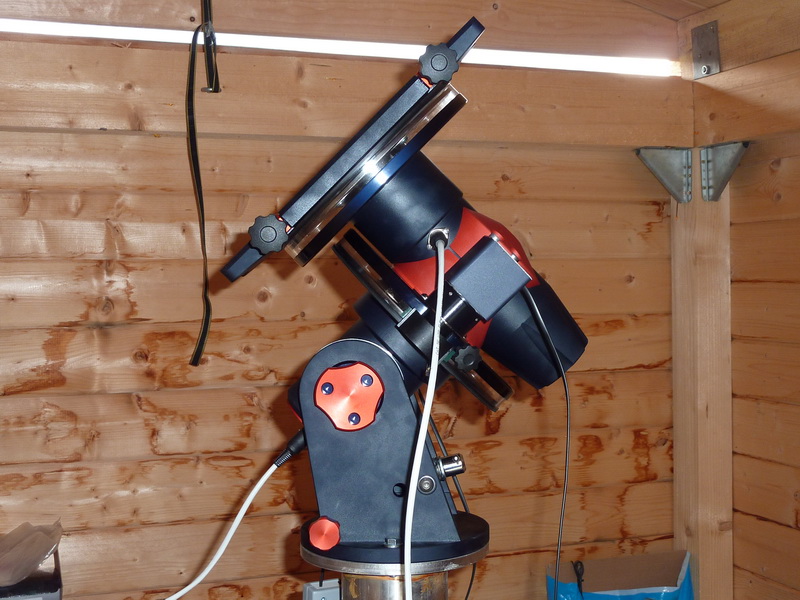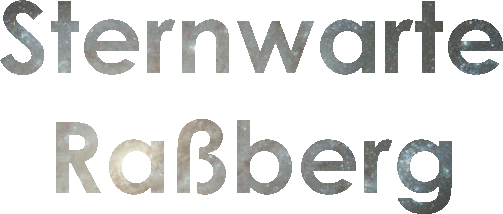Equipment review : Mounts
Gemini G53F
It all started with a visit to one of the world's top astrophotographers, Johannes Schedler. He had a new ASA DDM85 Direct Drive Mount and this seemed to be fantastic. Having seen this, the seed was planted to buy a new mount. I did give consideration to ASA, but even their smallest one, the DDM65 was extremely expensive, plus one had to buy completely new software to make use of all it's frills. At the time I was toying with the idea of an upgrade, I learnt from a friend that the Hungarian Manufacturer Gemini Design had just brought out a new Friction Drive Mount. Direct Drive, Friction Drive – what are these ? Well, most normal amateur mounts are driven by motors that transfer their power via gears to move the mount. The problem is, that all mechanical parts such as gears have imperfections and these in turn cause so-called Periodic Errors. Because most of these mounts have relatively short periods of 5-8 Minutes, these errors repeat a number of times whilst taking long exposures. Direct Drive and Friction Drive have no gears, the high precision motors move the mount directly, hence almost zero error and the period is also much longer, typically 30-40 minutes. The second advantage is backlash. When a geared motor changes direction, there is no movement for a short period due to the take up of slack in the gears. The Friction Drive has zero backlash ie is very responsive and accurate. My friend Daniel already owned a Gemini G42 and the build quality was terrific. I had used this mount a few times and in comparison to the CGE it was much better built. Gemini had announced that they had developed a new friction drive mount, the G53F and Daniel and myself ended up buying two units, which turned out to be only the second and third ones in existence.
As with most newly developed devices, it was expected that there would be some teething problems. It took nearly two months of sleepless nights and much work before the new mount worked correctly. On initially setting up the mount, I noticed a number of problems which rendered it almost useless. The three main problems were
a) it did not track correctly
b) whilst guiding the mount jumped backwards and forwards
c) the goto navigation system didn't work correctly
Well, after lots of trial and error and numerous emails to the supplier, we discovered that
a) it had been delivered with the wrong software - an update of the firmware solved the first problem
b) Hidden deep in the parameters of the software, one parameter was incorrectly set and this sent false signals to the mount causing the jumps. Resetting this parameter solved the second problem
c) This problem is not fully resolved, but the gotos work well enough that I can find things. A particular problem was on searching objects in the east, this caused many problems. I discovered that again, this was caused by an incorrect setting in the parameters.
I have managed to get the mount to communicate with both my control program, Maxim DL and my Planetarium program, Cartes du Ciel. I can control the mount either from these programs or from the hand controller.
The most important issue for astrophotography is so called guiding or tracking of an object. I still haven't fully set things up on the mount but have done numerous exposures of upto 4 hours and in this time had a maximum deviation of +/- 1 pixel. This is awesome - with my old mount, the tracking was adequate for exposure of upto 5 minutes but the tracking accuracy was at best +/-10 pixels in this short time. This means the new mount is truely capable of extremely long and almost perfect tracking, an astrophotographers dream !
Update 2016:
Well, the mount was relocated to my new observatory in 2013 and since then has been working fine. My main grievance is not with the mount but with the Pulsar2 controller. I had expected that when everything was setup accurately, that when the mount was parked and then reactivated, it would be able to carry out gotos accurately. This is not the case. After a lot of trial and error and wasted time, I now use the following procedure to calibrate the mount. In order to do this, I initially accurately aligned a small finder scope to my main telescope, this was a one off procedure.
- Choose a bright star that is in the Pulsar2 database, in my case usually in the west
- Move mount so as to point to this star, using the finder scope and center the star.
- Go into the alignment procedure, set the same star and confirm it is aligned
This generally gives a good enough alignment, so that objects are at least on frame. For a better alignment, I then goto the object, take a quick photo and plate solve this and then use the center of frame data in an alignment with RaDec. This gives a very accurate alignment.
I have on occasions had a number of other problems with the Pulsar2
- The internal battery doesn’t hold out for long and the unit looses time. Each time before use, I need to check the time calibration and correct it. In the past I regularly change batteries, now, I just leave it, as I have to do a calibration anyway, I include the time settings in this as well
- Over the years I have had various software problems that just seemed to appear and cause havoc. After lots of fiddling around and updates, they generally went away again, but caused many lost hours.
As for the mount itself, as mentioned before, it is very well built. The service from Gemini was also very good, I would email Andras and he would get back to me quickly. The company is now in Italy, but this should not make any difference. My mount was one of the first three produced. After a year there was a potential issue with the materials used for the friction plate which could cause problems at subzero temperatures. I never saw a problem, but the plates were changed free of charge. The only other problem I had was with one of the stepper motors, it had a loose connection. This too was were changed free of charge.
I think a lot of the problems I encountered were due to the fact that I was working from a permanent site. I know 3 or 4 people using the G53F mobile and they had not experienced these problems, but they were setting up everything each time and generally did not expect the level of accuracy I had hoped for. Having said this, I would still recommend the G53F – it is in a similar price class to the Celestron GCE I had, and is without doubt leagues better. I have looked at other mounts but find nothing in this price range to match it. The next move would be an AstroPhysics, 10Micron, Paramount or ASA mount, and none of these would be under 10,000€. Additionally the friction drive is really nice. It allows easy manual movement and in the event of a crash, nothing gets damaged ( unlike traditional gear driven mounts ).
Below a few photos taken using the new mount


and the mount itself ...



